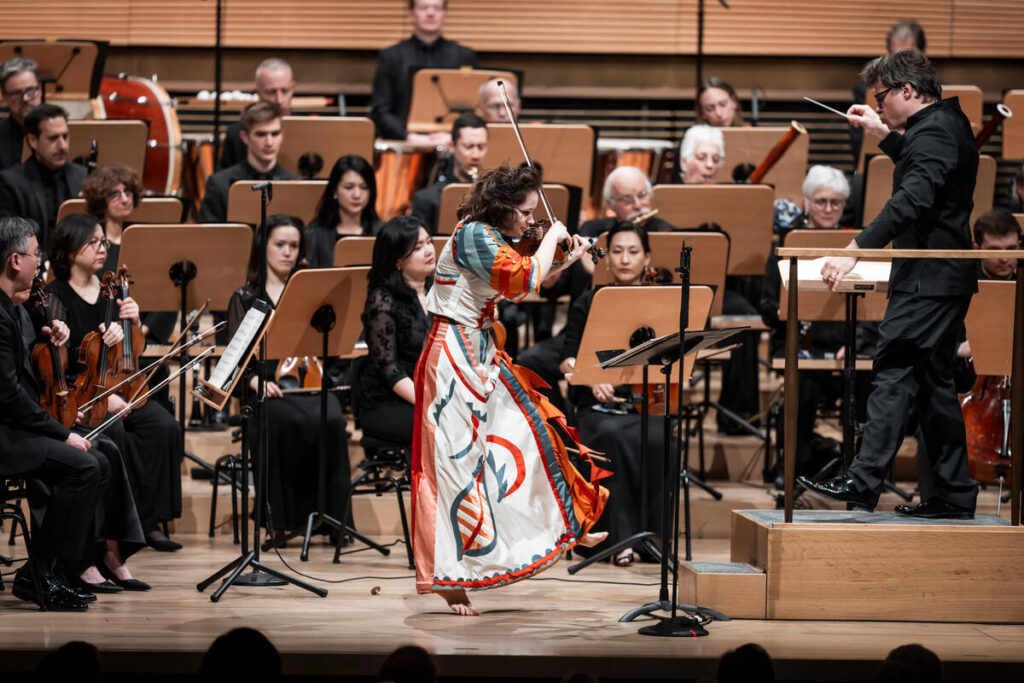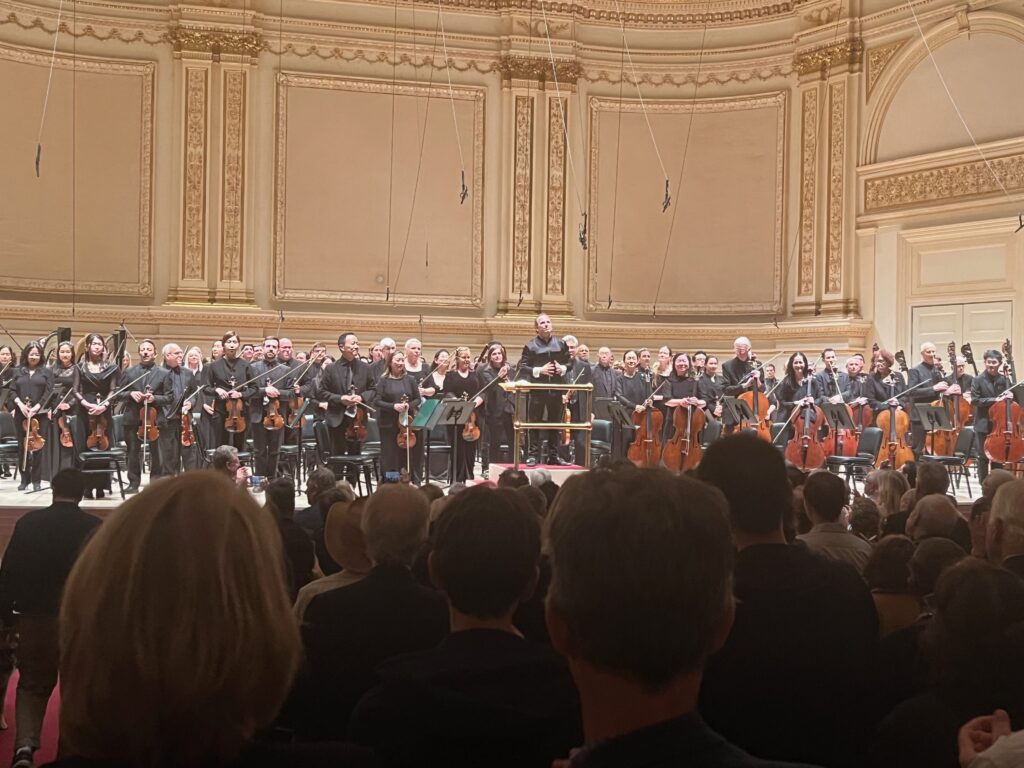VIEWPOINTS – Classical Music Roundup: Sparkling outings by the NY PHILHARMONIC and the PHILADELPHIA ORCHESTRA
- By drediman
- April 16, 2025
- No Comments
Over the past week or so, I had the chance to take in a pair of symphonic performances by our own New York Philharmonic and the visiting Philadelphia Orchestra. As per usual, read on for my thoughts on these sparkling concerts.

NEW YORK PHILHARMONIC
David Geffen Hall
First up last week at David Geffen Hall was an ideally-balanced concert by the New York Philharmonic conducted by Czech conductor Jakub Hrůša (HIGHLY RECOMMENDED). The program commenced with a world premiere — Jessie Montgomery’s Chemiluminescence. Co-comisssioned by the St. Louis Symphony Orchestra, Vail Music Festival, and The Sphinx Organization, the piece is an accomplished, carefully-crafted composition featuring shimmering strings that filled the hall, as well as a diverse array of tempos. It will likely find favor amongst Philharmonic audiences who generally prefer tonality in their contemporary works. In contrast was Stravinsky’s Violin Concerto, which still has the audacity to raise hairs, especially as ferociously played by soloist Patricia Kopatchinskaja, who approached the intensely rhythmic piece with a thrilling sense of abandon and drove the score with character and a variety of color. It’s interesting to hear the piece without the visual aid of Balanchine’s iconic choreography; happily, its dance-like quality — both playful and forceful — pronouncedly prevailed without it (following the concerto, Kopatchinskaja beguiled audiences with Jorge Sánchez-Chiong’s unusual Crin for solo violin and voice, as well her own distinctive arrangement of the Stravinsky concerto, which she performed with concertmaster Frank Huang). The bill concluded with a magnificently rich account of Brahms Symphony No. 1, which was indicative of the Philharmonic’s overall playing under Hrůša.

PHILADELPHIA ORCHESTRA
Carnegie Hall
Then last night, busy maestro Yannick Nézet-Séguin returned to Carnegie Hall for one-night-only to lead the storied Philadelphia Orchestra in playing Mahler’s monumental Sixth Symphony (also referred to as Mahler’s “Tragic”) (HIGHLY RECOMMENDED). The overall performance was tight and stylish, giving a sense life happening rather than consciously imposing overt sentiment onto the music. It was a fascinating approach that paid off handsomely — performing with energy and keen intent, the Philadelphia forces kept the audience on the edge of their seat, vanquishing any sort of languidness that sometimes accompanies performances of Mahler. This was apparent right off the bat in the purposeful Allegro energico, to which Nézet-Séguin brought bright dynamism and forward momentum, vividly enlivening the elaborately orchestrated march-like movement. This was followed by the Scherzo, which exuded an extra dash of bite and brashness — even a hint of cynicism — further adding texture to the maestro’s restless vision for the symphony. The Andante moderato movement — a nearly celestial sonic manifestation of love — was pure bliss and right in line with the ensemble’s famously luscious yet balanced string sound. Then came the sprawling, intricately laid out, and ultimately harrowing Allegro moderato finale, which produced moments of wonder and vitality, alongside moments of stunned reckoning, as manifested by the forceful and unnerving hammer blows (the “blows of fate”) that punctuated the labyrinthine movement. Well, such is life.

 Copyright © 2025
Copyright © 2025
Leave a Reply